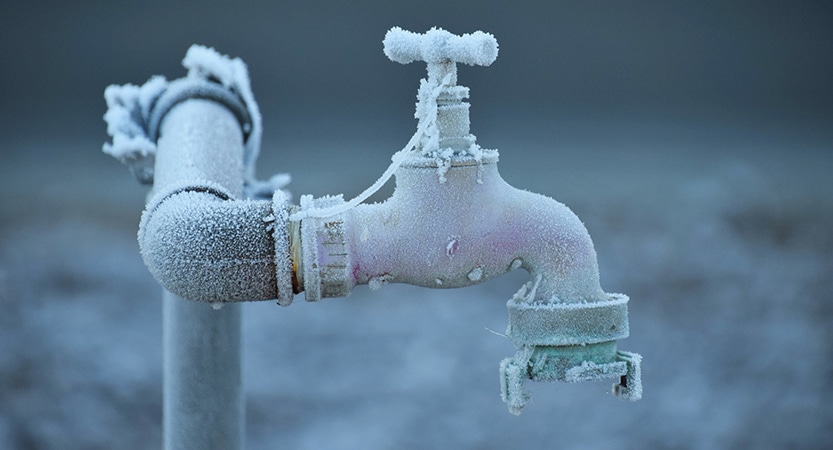Tips to Avoid Frozen Pipes in Cold Weather: Professional Tips
Tips to Avoid Frozen Pipes in Cold Weather: Professional Tips
Blog Article
Were you looking for suggestions about How To Avoid Freezing Pipes?

Winter can ruin your plumbing, particularly by freezing pipes. Right here's just how to prevent it from occurring and what to do if it does.
Introduction
As temperature levels decrease, the danger of frozen pipelines increases, possibly leading to expensive repair work and water damage. Understanding how to avoid frozen pipelines is essential for property owners in cold environments.
Comprehending Frozen Pipes
What causes pipelines to freeze?
Pipes ice up when exposed to temperature levels listed below 32 ° F (0 ° C) for prolonged durations. As water inside the pipes ices up, it broadens, taxing the pipe walls and possibly creating them to rupture.
Risks and damages
Frozen pipelines can bring about water system interruptions, home damage, and costly repairs. Burst pipes can flooding homes and cause considerable structural damage.
Signs of Frozen Pipes
Identifying frozen pipelines early can prevent them from bursting.
Exactly how to determine icy pipes
Try to find reduced water flow from faucets, uncommon odors or sounds from pipes, and visible frost on exposed pipelines.
Avoidance Tips
Insulating prone pipes
Wrap pipes in insulation sleeves or use heat tape to protect them from freezing temperatures. Concentrate on pipelines in unheated or exterior locations of the home.
Heating methods
Keep interior areas effectively heated, particularly areas with pipes. Open cabinet doors to allow cozy air to circulate around pipelines under sinks.
Protecting Outside Pipes
Garden pipes and exterior faucets
Separate and drain yard hoses prior to winter season. Install frost-proof spigots or cover outdoor taps with shielded caps.
What to Do If Your Pipelines Freeze
Immediate activities to take
If you suspect frozen pipes, maintain faucets open to eliminate stress as the ice thaws. Make use of a hairdryer or towels soaked in warm water to thaw pipelines slowly.
Long-Term Solutions
Structural adjustments
Take into consideration rerouting pipelines away from outside wall surfaces or unheated locations. Add additional insulation to attics, basements, and crawl spaces.
Upgrading insulation
Invest in high-quality insulation for pipes, attic rooms, and wall surfaces. Proper insulation assists maintain regular temperature levels and reduces the risk of frozen pipes.
Conclusion
Protecting against icy pipes requires proactive steps and quick reactions. By comprehending the causes, indicators, and preventive measures, homeowners can secure their plumbing throughout cold weather.
5 Ways to Prevent Frozen Pipes
Drain Outdoor Faucets and Disconnect Hoses
First, close the shut-off valve that controls the flow of water in the pipe to your outdoor faucet. Then, head outside to disconnect and drain your hose and open the outdoor faucet to allow the water to completely drain out of the line. Turn off the faucet when done. Finally, head back to the shut-off valve and drain the remaining water inside the pipe into a bucket or container. Additionally, if you have a home irrigation system, you should consider hiring an expert to clear the system of water each year.
Insulate Pipes
One of the best and most cost-effective methods for preventing frozen water pipes is to wrap your pipes with insulation. This is especially important for areas in your home that aren’t exposed to heat, such as an attic. We suggest using foam sleeves, which can typically be found at your local hardware store.
Keep Heat Running at 65
Your pipes are located inside your walls, and the temperature there is much colder than the rest of the house. To prevent your pipes from freezing, The Insurance Information Institute suggests that you keep your home heated to at least 65 degrees, even when traveling. You may want to invest in smart devices that can keep an eye on the temperature in your home while you’re away.
Leave Water Dripping
Moving water — even a small trickle — can prevent ice from forming inside your pipes. When freezing temps are imminent, start a drip of water from all faucets that serve exposed pipes. Leaving a few faucets running will also help relieve pressure inside the pipes and help prevent a rupture if the water inside freezes.
Open Cupboard Doors
Warm your kitchen and bathroom pipes by opening cupboards and vanities. You should also leave your interior doors ajar to help warm air circulate evenly throughout your home.

Do you enjoy more info about Helpful Tips to Prevent Frozen Pipes this Winter? Make feedback directly below. We will be pleased to hear your ideas about this posting. In hopes that you come back again later on. Enjoyed reading our blog? Please quickly share it. Help somebody else find it. We love your readership.
Contact Us Report this page